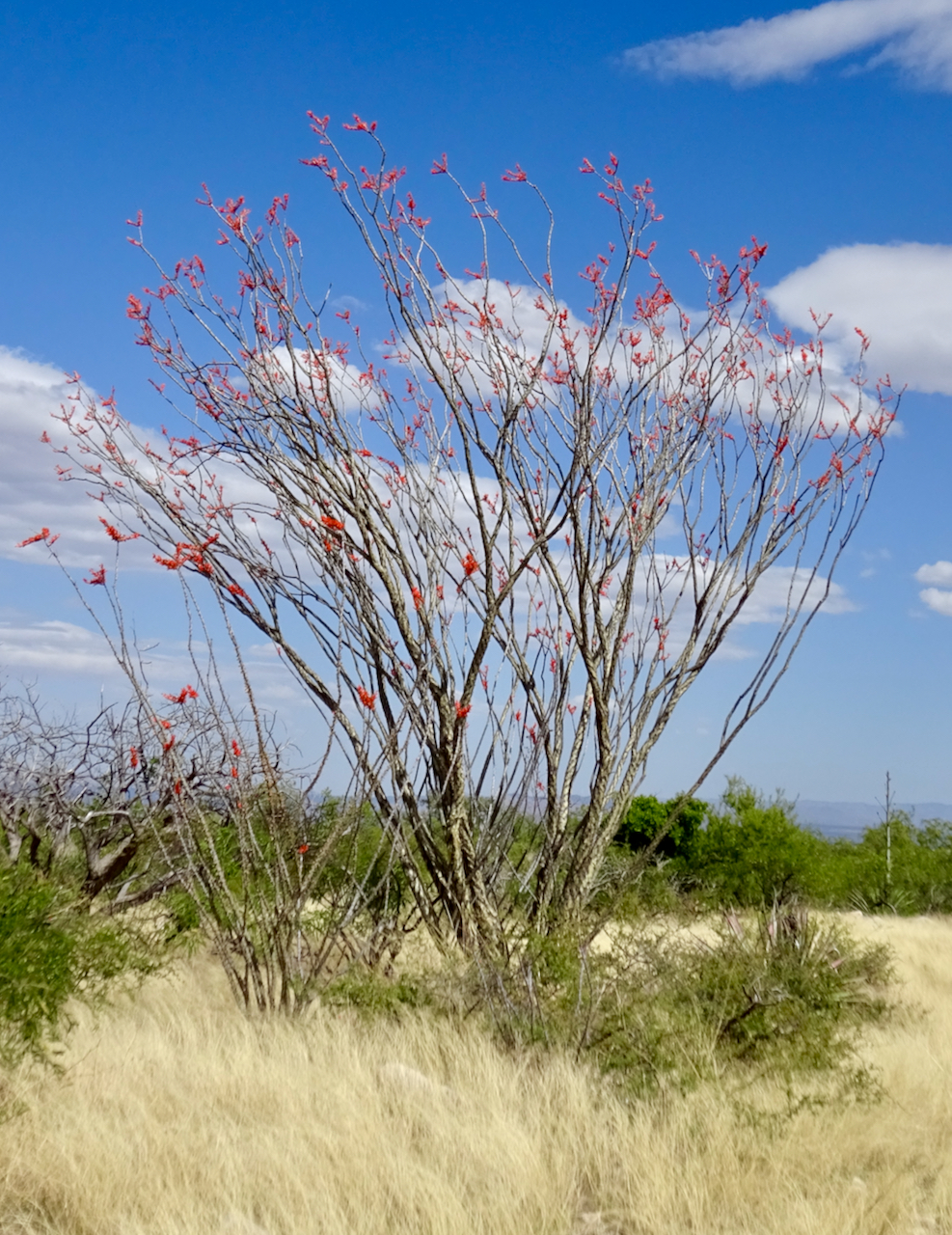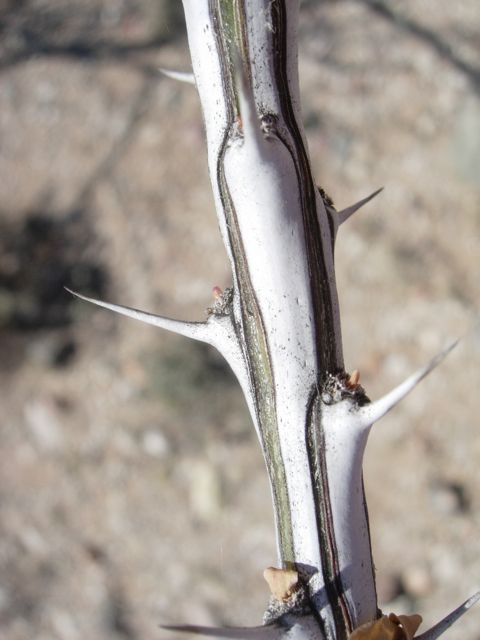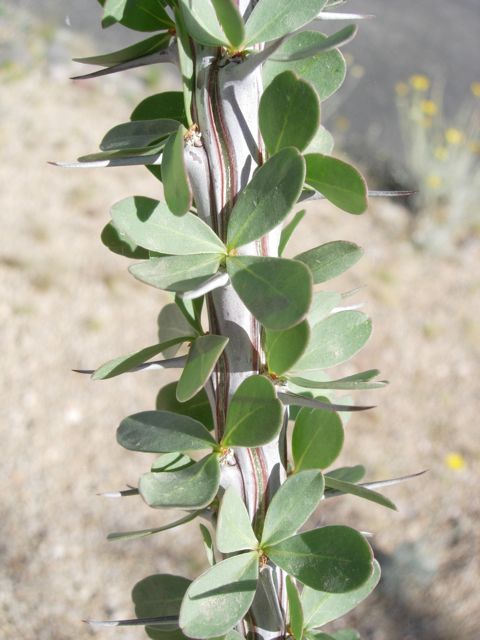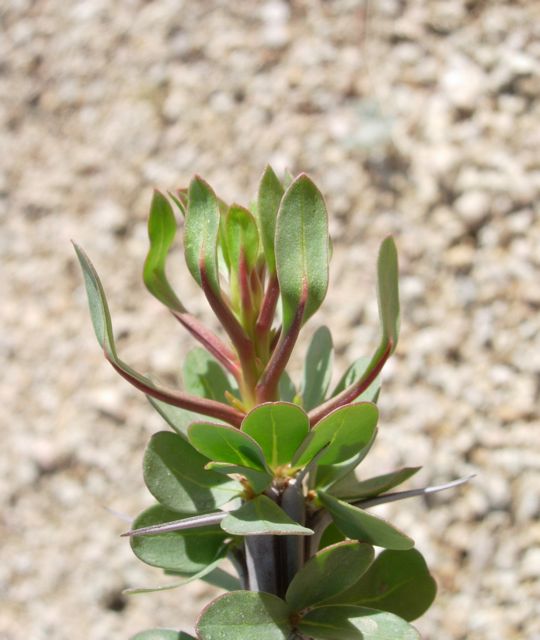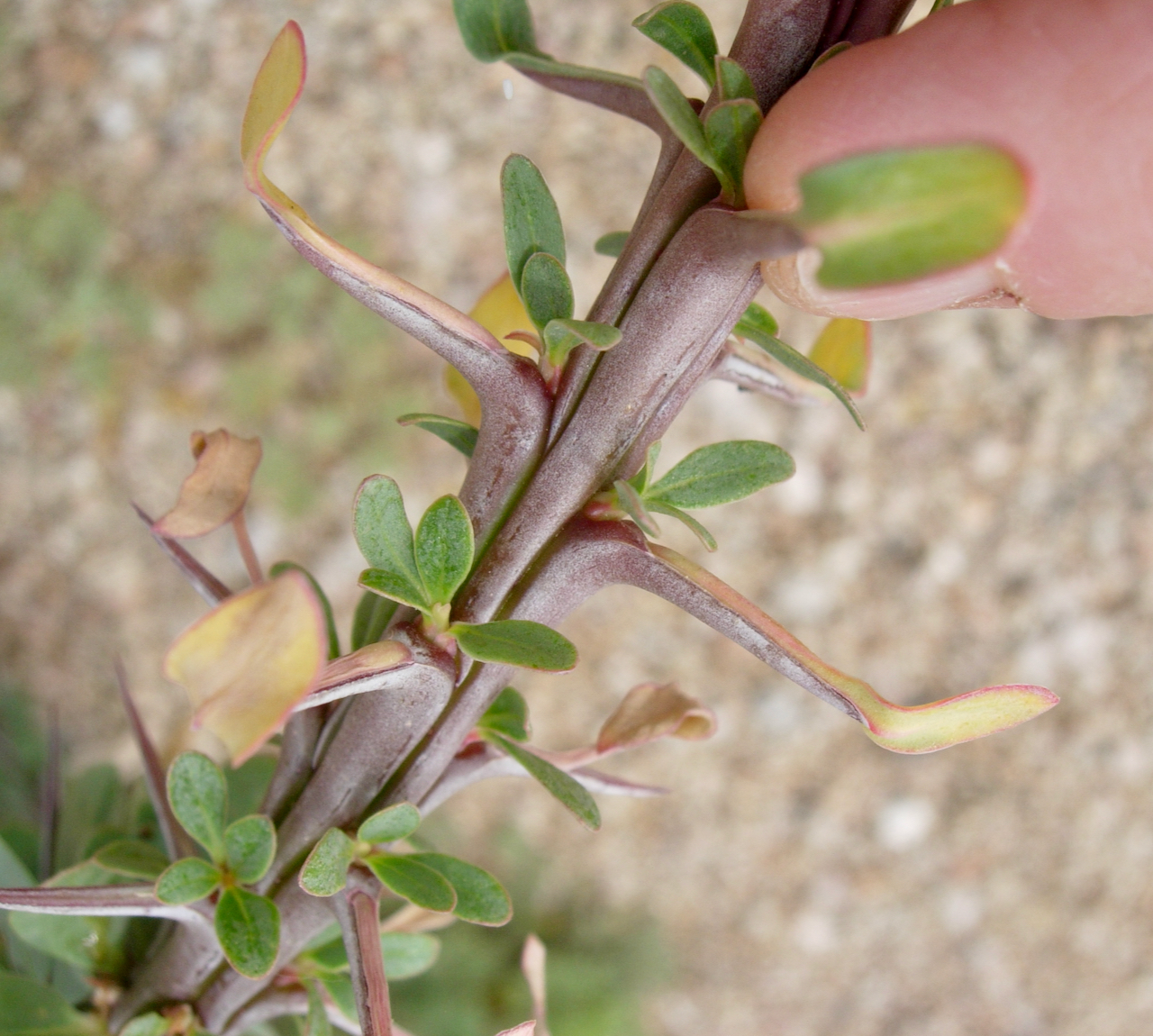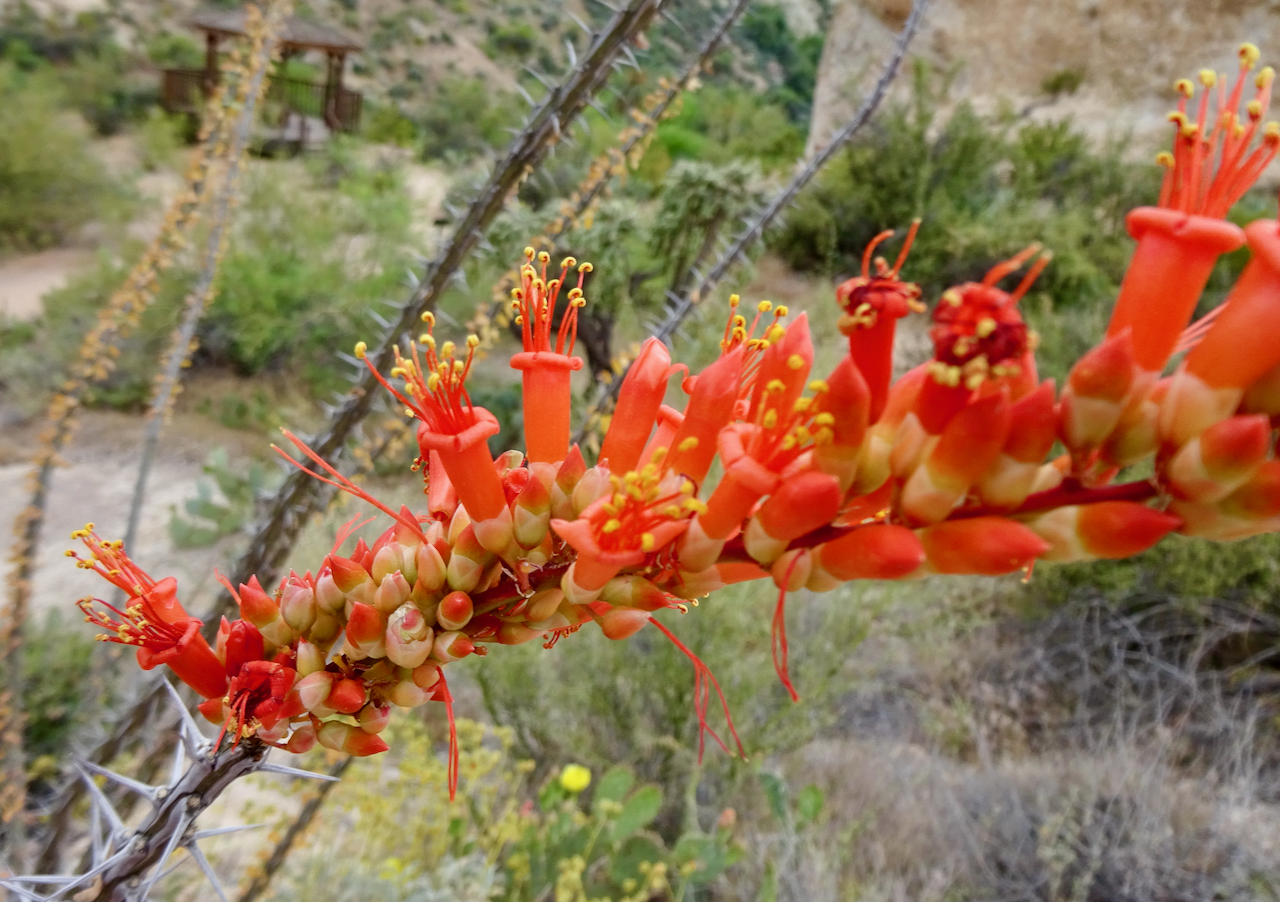Ocotillo
Fouquieria splendens
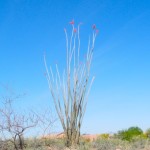
About the Plant
Ocotillo is one of the best known plants of the American deserts, its spiny, clustered stems creating a unique silhouette. Ocotillo may be leafless for many months, but leaves appear quickly after rain, often several times a year. It reliably flowers every spring (about March in the Tucson area) and is an important food source for migrating hummingbirds.
Established ocotillo needs no care. Transplants need watering until they become established. Plants are often dug and replanted, the smaller plants surviving more reliably than the larger. Seed-grown, potted plants may be available at some nurseries. Make sure to grow ocotillo in well-drained soil.
Notes: Ocotillo is a protected species under Arizona Native Plant Law. Written permission from the landowner is required in order to harvest ocotillo on private, state, or federal land.
Wildlife value: attracts hummingbirds when flowering. Carpenter bees and verdins will cut into the base of a flower to obtain nectar.
More Information
Cactus, Agave, Yucca and Ocotillo from Arizona Cooperative Extension
Planting and Care of your Bare-Root Ocotillo from Tucson Cactus and Succulent Society
Horticultural information from ASU
Technical botanical description from SEINet
In books:
Native Plants for Southwestern Landscapes by Judy Mielke, page 151.
A Natural History of the Sonoran Desert by Arizona-Sonoran Desert Museum, page 240.
ID Characteristics
The bright red, tubular flowers appear in a 10 inch long cluster in spring. Leaves may or may not be present. Each inch-long flower has 5 petals, fused together to form a tube. Fruit is a capsule that is not ornamental.
